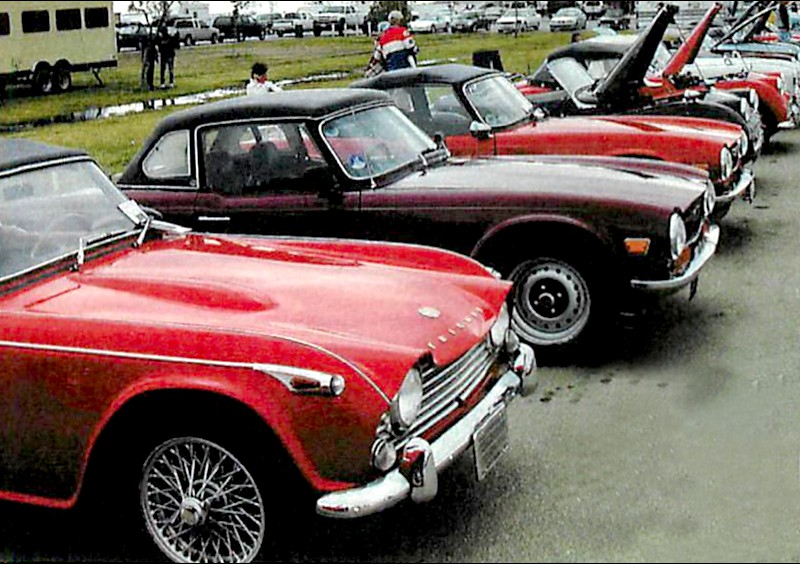Q: What are the differences between rubber and polyurethane bushings?
A: All original style rubber bushings allow movement by the rubber twisting in rotation. To ensure that this happens, the rubber must bond to either the suspension component, or be bonded to a steel sleeve which is mechanically attached to the component. There are two types of rubber bushings: rubber only and rubber bonded to one or two steel sleeves. Sleeve type bushings on British cars are commonly called “Metalastic Bushings” which is a brand name of the original supplier.
Where a rubber-faced bushing is used, the rubber has to bond to the component to which it is installed. The bond is formed when the mechanical fastening is tightened and the rubber is clamped to the component. If the clamping force is inadequate, of if the metal surface is contaminated, the rubber will not bond and the face of the bush will quickly fail as it works against the steel component. Examples of this type of bushing are the MGB front inner A-arm bush, and the rear locating bushes on many leaf springs.
Failures of this type are less likely with a sleeve type bushing, as the bond to the steel is made under factory conditions. For this reason, sleeved bushings can handle higher loadings and are less prone to failure after DIY installation. The bushings are pressed into suspension components and the inner sleeve is clamped. The fit of the bush is critical and it is also important that the inner sleeve be clamped solidly. Any movement will cause severe wear that can damage the suspension components. Corrosion can be an issue with this type of bush, as the steel sleeve can seize to the component or mounting bolt. Examples of this type of bushing are front leaf spring eye bushes, TR6 rear swing arm bushes, Spitfire front A-arm bushes and the MBG V8 inner A-arm bushes.
Since the rubber bushings act by rotational torsion it is critical that the suspension be at rest when the bushing mountings are lightened, in other words with the tires on the ground and the vehicle normally loaded. If the bushes are clamped with the suspension unsupported, the rubber bond will be twisted when the car is normally loaded and will fail under suspension compression. Incorrect installation is a very common problem and has led to many complaints about poor bushing design. Under light loading the soft rubber gives good isolation from vibration. As loads increase the rotational twist in the rubber stiffens the bush reducing suspension component deflection. The natural increasing spring rate of rubber under compression gives a good balance between low loading vibration resistance and high load deflection. If you need custom-made rubber parts for your vehicle, you may order them from a custom rubber part manufacturing company.
Polyurethane bushings are not designed to operate in torsion. Instead, one or both faces of the bush slide against a polished surface. The material of the bushing can be much stiller, as it is not required to twist. This allows the bushing to locate the suspension arm more accurately under high loads. Unfortunately the stiffer material will transmit inure vibration under low loading than traditional rubber bushes. As with most suspension upgrades, improved high speed suspension location conies with the cost of slightly reduced ride quality. Softer Polyurethane bushes reduce this problem and have proved very effective for the MG TD, MGA and MGB front inner pivot location.
If the polyurethane bush rides against an existing suspension component or bolt the metal surface must be in good condition or the bush will deteriorate rapidly. In many cases polished sleeves are supplied to ensure a smooth pivot surface. When sleeves are supplied the clearances must be checked to insure that the sleeve is locked in place and docs not rotate on the mounting surface causing damage.
Even though polyurethane bushings rotate and do not bond to the suspension component, it is still important to ensure that they are installed with the suspension at rest. There may not be sufficient force on the component to rotate the bushing to the correct location once the suspension is compressed.
The stiffer material of polyurethane bushings and pads can increase suspension bush longevity in application! where the original parts tended to fail prematurely. Rear leaf spring axle pads arc an example. The stiffer material is less likely to compress over time and prevents rear wheel steering due to the mounting u-bolts becoming loose.
By Kelvin Dodd





'Tech Q&A: Rubber or Polyurethane Bushings?' has no comments
Be the first to comment this post!